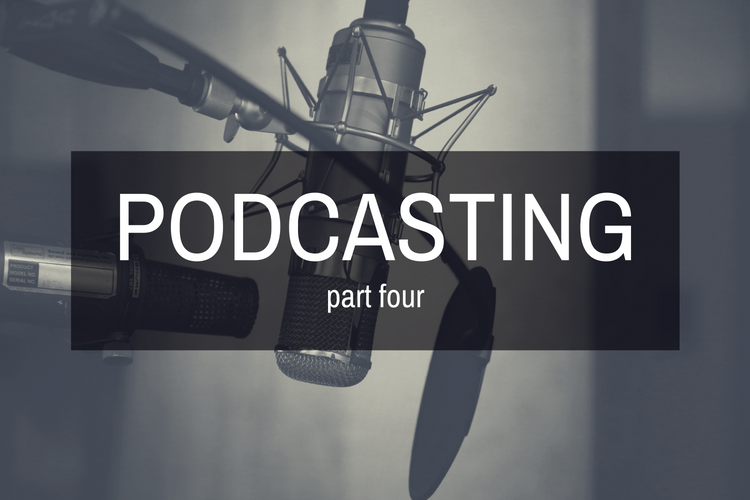
Podcasting part four: Details and Strategy
This is the forth and final in a series of articles about podcasting by BPR’s Wayne Clouten
LENGTH
A lot of people ask me what length should a podcast be? There really is no golden rule to podcast length other than it should be as long as it needs to be and as short as it can be.
However, you can apply a bit of science to this if you wish. If you were thinking about creating a podcast for consumption when people are commuting to and from work, then you may wish to consider making it as long as the average commute time in your market. It is important to think about who you are targeting with your podcast and what length might suit the listening behaviour and/or available attention span of your target.
Another perspective on podcast length is the nature of the content itself. How many ideas or themes are you trying to convey? Is it serious content or light hearted? Don’t over-cook it or repeat things otherwise your podcast may become boring or create fatigue. There is one important rule: always leave them wanting more so in this respect erring on the side of brevity to begin with is a good idea.
PRODUCTION VALUES
Good production values are important and will become increasingly significant to the expectation of the podcast consumer as time goes by. This starts with the voice. Use quality microphones and equalisation in the recoding of all the voices so all the voice work is clear and of equal level. When editing out mistakes be extremely conscious of making them inconspicuous. Nothing devalues a podcast more than sloppy, obvious edits, particularly if the voice levels change.
Be mindful of ambient background noise. Background noise is not a problem as it can often lend atmosphere to the podcast, but inconsistent ambient noise levels can be annoying to the listener.
CREATE THEATRE
An often-neglected area of focus is creating that wonderful thing we call “theatre of the mind”. This is where sound effects and music can be the magic dust that brings a podcast to life. Human beings engage most with content that stimulates the imagination. The more sensory you make a listening experience the more engaging and interesting it will be. A good illustration of this is watching a scary movie, an easy way to make a scary movie much less scary is to turn the volume down.
Thematic music is very important particularly if you are creating a podcast series. It can enhance the sense of continuity in the podcast and creates a sound stage for your spoken content. Music stabs and ramps can also serve to signal changes in themes or ideas, effectively creating audio chapters if you wish. There are a number of websites that provide non-licenced and/or limited licence music for podcast producers.
STRATEGY
For a radio station the fundamental strategic goal is creating a “listening circle” whenever possible. This means that whoever is pushed out to your podcast content is incentivised to return to the linear program.
Let’s take the example of an interview with a celebrity. Imagine the total recorded interview length was 12 minutes which was edited down to 4 minutes for airplay (the best of). At the end of the 4-minute interview which goes to air the DJ promotes the fact that fans of the celebrity can listen to the complete interview as a podcast on the station app/website.
Isn’t this taking listeners away from my linear program you rightly ask? No. There is a bigger picture at play here. People who don’t have any interest in the celebrity continue listening and probably thank you for not playing the whole 12 minutes on air. Hard core fans of the celebrity love you because they can now get more of what they love. Some might bump out to your app immediately and listen to the podcast, many of these fans will stay listening because it doesn’t suit them at that moment to listen.
The golden rule is making the podcast content different to the 4 minutes people just heard in the linear program. There are two easy ways of doing this. A. Start the podcast with a quick recap of the main points played on air then get into the 8 minutes that was not heard on-air. B. Edit the 12-minute interview so that what was heard on air is sprinkled in between the new content or placed at the end of the 12 minutes.
Here is the important part, at the end of podcast push back to the linear program in some way or at least push out to other podcast content on offer.
This last point is critical if your podcast content is reaching people who do not usually listen to your linear program (are not in the cume of the station). This is another reason why you must have strong production values, so your station brand presents a good impression.
The best form of on-air promotion for your podcast content is either immediately following content which is offered as a podcast or when research reveals you are losing listeners who may be interested in the podcast content.
There is a lot more to building a podcast business strategy such as monetisation, how and when to use podcast aggregators, sourcing and developing talent and promotion but after 4 articles on the subject of Podcasting we better leave something for when we meet in person!
For more information contact info@bprworld.com
PODCASTING part one
PODCASTING part two
PODCASTING part three
Schlagwörter: Podcasting
Discussion
No comments on this post yet, start a discussion below!